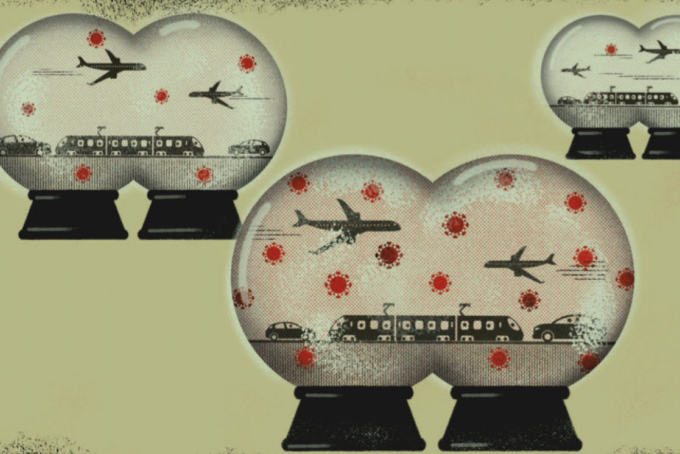Finance & economics
財經
The global economy
全球經濟
A good kind of bubble
良好的圈
As some countries contain the virus more successfully than others, could travel zones offer a route to economic recovery?
一些國家比其他國家更成功地遏制了病毒,這能否讓旅游業為經濟復蘇開辟一條道路?
It may be a painful fact to contemplate during these locked-down days, but last year the world was more mobile than ever, with people taking 4.6bn flights.
在封鎖期間,這個事實可能會讓人感到痛苦,但去年,全世界的流動人口比任何時候都多,人們乘坐了46億次航班。
In April this year, though, planes carried just 47m passengers; that level of mobility, annualised, would set the clocks back to 1978.
然而,今年4月,飛機載客量只有4700萬人次;按年度計算,這樣的流動性水平會讓時光退回1978年。
The virtual halt to travel has exacerbated the global economy’s woes, complicating trade ties, upending business and devastating the tourism industry.
實際上停擺的旅游業加劇了全球經濟的困境,也讓貿易關系更加復雜,它顛覆了商業,摧毀了旅游業。

Little wonder that governments want to restore links.
難怪各國政府想要恢復聯系。
An idea gaining favour is the creation of travel “bubbles”, binding together countries that have fared well against the coronavirus.
一個越來越受歡迎的想法是創造旅游“圈”,將在對抗新冠病毒方面表現良好的國家聯結在一起。
A closer look yields some grounds for optimism.
仔細思考一下,我們是有理由感到樂觀的。
The Economist has identified potential bubbles that account for around 35% of global GDP, 39% of all trade in goods and services and 42% of the world’s spending on tourism.
《經濟學人》指出,潛在的旅游圈占全球GDP的35%,占商品和服務貿易的39%,以及世界旅游消費的42%。
But the challenge of connecting them also underscores how hard restarting the global economy will be.
但將它們聯系起來是一項挑戰,這突顯了重啟全球經濟的難度。
Simply returning borders to pre-virus days is, for now, inconceivable.
就目前而言,連讓邊境恢復為病毒爆發前的樣子都難以實現。
Many health experts, first critical of travel restrictions, have come to view strict controls as useful, especially for places that have contained local infections.
許多起初對旅行限制持批評態度的衛生專家開始認為,嚴格的控制措施是有用的,尤其是在那些控制了本地疫情的地方。
“Every inbound case is a potential seed that can grow into an outbreak,” says Ben Cowling, an epidemiologist at Hong Kong University.
香港大學流行病學家本·考林表示:“每一個傳入的病例都是一粒可能導致疫情爆發的潛在種子。”
譯文由可可原創,僅供學習交流使用,未經許可請勿轉載。











